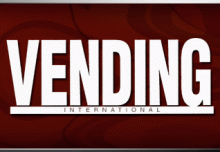1 – July 1st 2007 is date for full implementation of WEEE.
2 – Any importer of Electrical and Electronic Equipment (EEE) is classified as a “Producer” of WEEE and as such has to:
a) Register with The Environmental Agency, and
b) Employ a Government Approved Compliance Agency to administer the WEEE process.
3 – “Producers” have the financial responsibility of recycling Waste of EEE (WEEE) at the end of its life.
4 – For every new unit of EEE sold by the “Producer” to a Distributor from July 1st on, the “Producer” must accept the financial responsibility for recycling any “like for like” unit of “Historical WEEE”.
5 – “Like for like” is any EEE for same use and of a similar size. In practice that would mean any make of Water Cooler. In other words, if a “Producer” sells one of his own Coolers to a Distributor, he has to accept from him any make of Water Cooler back.
6 – “Historical WEEE” is anything currently on the market.
7 – Any new EEE sold by the “Producer” after July 1st constitutes “New WEEE”. Once the “Historic WEEE” has been flushed out of the market, the “Producers” responsibility will be limited to his own product “New WEEE”.
a) WEEE Legislation is still unclear when and how this changeover will happen. Luckily the Legislator has some time to sort this out since it will take some time before new EEE becomes “New WEEE”.
b) How can “New WEEE” be separated from “Historic WEEE”? “New WEEE” will carry a recycling label consisting of the familiar Crossed out Wheeled Bin, but with a Bar underneath the Bin. It is this Bar which separates New from Historic.
8 – “Producers” can charge Distributors a separate WEEE Recycling Charge on their invoice, to recover the cost of WEEE. The Recycling Charge will have to pay for removing “Historic WEEE” AND the “Producers” own “New WEEE”. This double responsibility is euphemistically called “the double whammy”.
9 – Distributors can charge their End Customers an Environmental Surcharge and some in the Water Industry have in fact done so for some years.
10 – To keep the cost of WEEE collection down, “Producers” may request minimum pick up quantities from the Distributor.
11 – The Government Approved Compliance Agency will handle most – if not all – of the detailed WEEE process from collection to recycling (for Water Coolers this includes de-gassing and removing the compressor oil).
12 – Distributors, who have independently registered as “Producer” (with all that entails), may assume the responsibility for WEEE purchased from another “Producer”:
a) This would require a Legally Binding Agreement between the “Producer” and the Distributor which would confirm that the Distributor is registered as a bona fide “Producer” and is able and willing to arrange for the recycling of WEEE according to Legislation. (Copies of a Generic Transfer Agreement can be purchased from the EPDWA).
b) The original “Producer” will always retain ultimate responsibility in the eyes of the law. If for instance the “Distributor Producer” goes bust, the responsibility will revert back to the original “Producer”.


